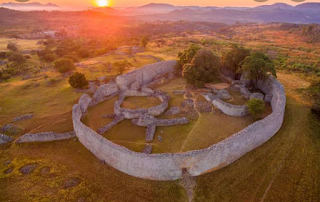*North Africa for stone and rammed earth,
*Horn of African for stone and mortar,
*West Africa for mud/adobe,
*Central Africa for thatch/wood and more perishable materials,
*Southeastern and Southern Africa for stone and thatch/wood.
Below are the 5 ancient African architecture that would blow your mind; you probably don't know they exist!
1. Great Zimbabwe
2. Timbuktu
Timbuktu is a city in Mali with very distinguishable architecture built with adobe and mud brick buildings but the most famous is the university. Most of the architecture present in this region is commentary on the history and evolution of human beings. In its significance, it pays homage to its ancestral presence because of the common materials used in its construction.
3. National Arts Theatre
Situated in Lagos state, Nigeria is a cultural center built in the year 1976. It is about 31m tall with a surface area of 23,000 sq.m It was built in a contemporary style of asymmetrical composition, featuring an exterior form shaped like a military hat. It was significantly constructed to promote the culture and arts of Nigeria, playing a significant role as a cultural symbol that hosts various national and international activities.
4. Jaekel House
In another area of Lagos, Nigeria is a two-storey mansion, the Jaekal house. It was the former residence of a railway general manager built in 1898. The building is an example of a Classic Colonial Architecture with deep verandahs and overhanging eaves, built with timber and pre-fabricated material.
Significance: It functions as a museum with collections of photographs from the 1940s to 1970s, depicting various historical events.
5. Cathedral Church Of Christ
So, when we say Africa is blessed, it is indeed!






Post a Comment